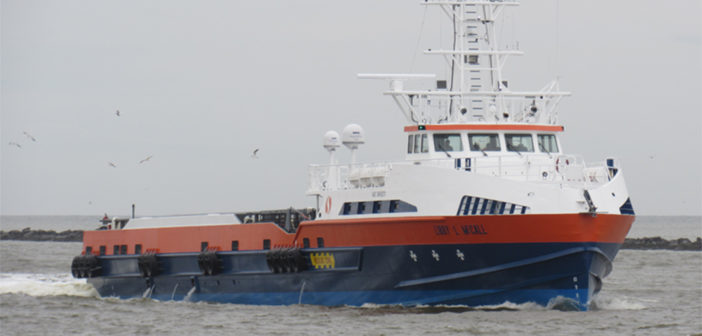Seacor Marine Holdings Inc., Houston, has announced cost reduction plans to reduce its workforce, reorganize management structure, and close and/or consolidate certain facilities in the U.S. Gulf of Mexico, Middle East, and Europe.
The company expects that the cost reduction plans will result in an annual savings of at least $8 million, which is approximately 17% of Seacor’s total administrative and general expense over the last 12 months.
“Activity levels in the U.S. Gulf of Mexico remain tepid as customer demand is highly sensitive to oil and gas prices,” Seacor’s CEO John Gellert said in a statement announcing the company’s second quarter results. “Tendering activity, especially in international markets served by our asset portfolio, points to a continuing recovery. Unfortunately, the pace of the recovery is slower than we had hoped, leading us to implement our aggressive cost-cutting initiative.
For 2019's second quarter, net loss attributable to Seacor Marine was $28.4 million ($1.21 per basic and diluted share), and operating loss was $16.5 million. Net loss attributable to Seacor Marine for the second quarter of 2018 was $25 million ($1.19 per basic and diluted share) and operating loss was $21 million.
Following the end of the quarter, Seacor initiated cost reduction initiatives aimed at better aligning its operating expenses with its view of current and prospective market conditions. The company anticipates that the initiatives will affect all of its reportable segments and expects the bulk of the initiatives to be completed by the second quarter of 2020. These initiatives will result in a one-time restructuring charge in the third quarter.
Seacor saw a 6% increase in total operating revenues for the second quarter 2019 as compared with the same period last year, primarily due to a 10% increase in utilization. The improved utilization reflects a 7% increase in on-hire days despite an 8% decrease in the number of available days as a result of asset sales during the last 12 months, compared with the second quarter of 2018, company officials said.
Consolidated direct vessel profit (DVP) for the second quarter of 2019 increased by $6.1 million, or 41%, to $20.8 million from $14.7 million in the second quarter of 2018. Primary drivers of the increase were current quarter increases in revenues, along with a decrease in labor costs compared to the second quarter of 2018 due to a $1.2 million foreign pension adjustment in 2018, $1 million reduction in drydockings and a $1.7 million reduction in other major repairs.
Wind energy support revenues for the second quarter of 2019 increased by $3.3 million to $9.8 million from $6.5 million in the second quarter of 2018, a 52% increase, and DVP for this activity increased by $2 million to $4.7 million from $2.7 million in the second quarter of 2018, a 76% increase. This growth included both organic improvement in utilization and average day rates for our crew transfer vessel (CTV) fleet and the start of a multiyear contract in Europe for one liftboat.
“Our investments in wind energy support are paying off and continue to develop attractive growth opportunities,” Gellert said. “Notable highlights from the second quarter were the commencement of a 30-month contract in Europe for our largest and most capable liftboat, increased activity of our CTVs in Europe, and new tendering activity in the U.S. for Jones Act-compliant assets in anticipation of significant offshore wind farm installations off the East Coast."
Start-up expenses incurred by the company's Brazilian focused joint venture and Chinese new construction platform supply vessel (PSV) joint venture, resulted in $5.6 million in losses from 50% or less owned companies. These joint ventures incurred drydocking and/or mobilization expenses for a total of eight vessels, all of which are expected to begin work and contribute positively to the company’s results in the third quarter.
“We are focused on returning to profit and generating cash, while remaining vigilant in positioning ourselves to take advantage of opportunities in any market conditions,” Gellert said. “We have proactively reassessed our cost structure and regional footprint and initiated efforts to optimize both. I am confident that these efforts, and our continued emphasis on core assets, regions and services with the highest potential for improved margins, allow us to chart our own path to profitability without depending on a full market recovery in oil and gas services.”




